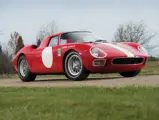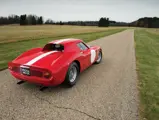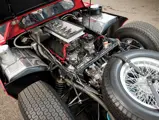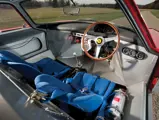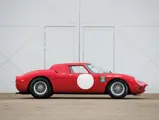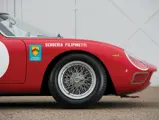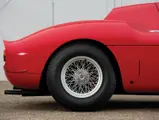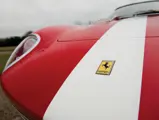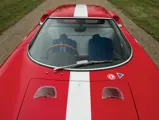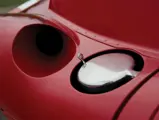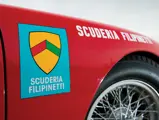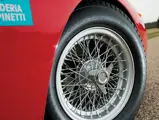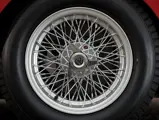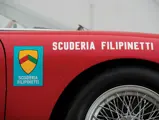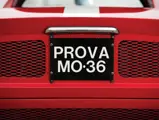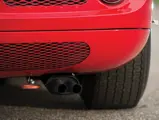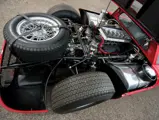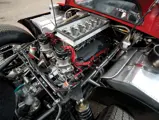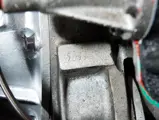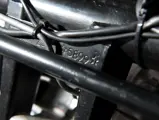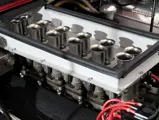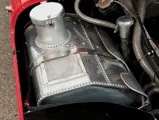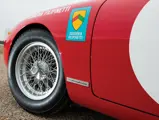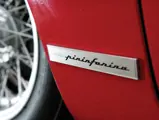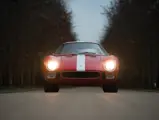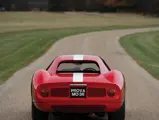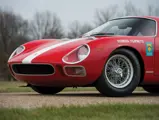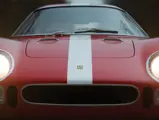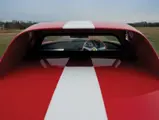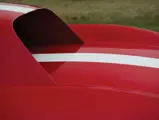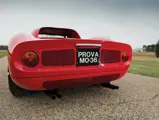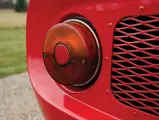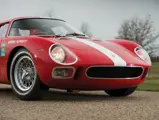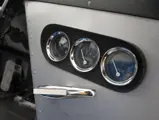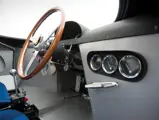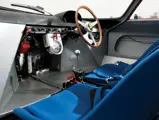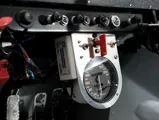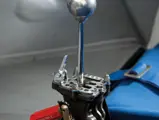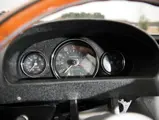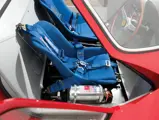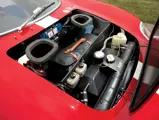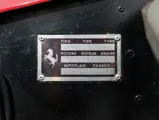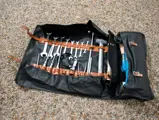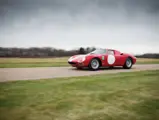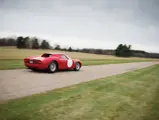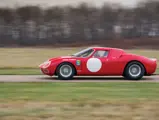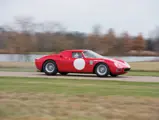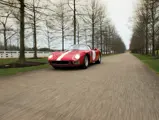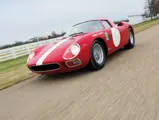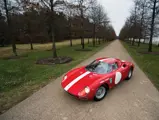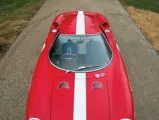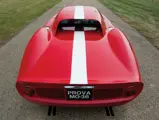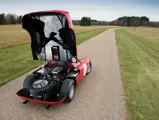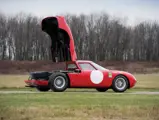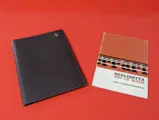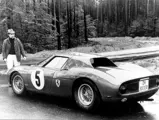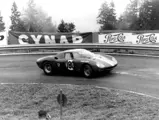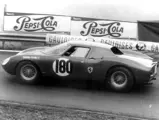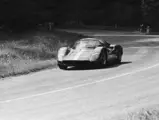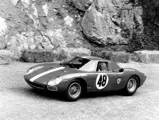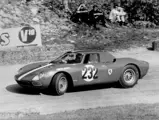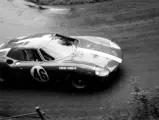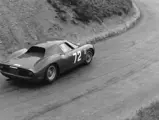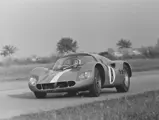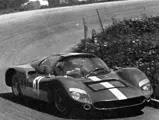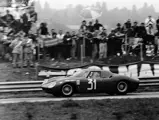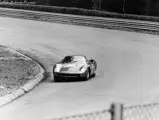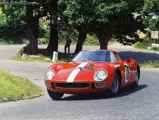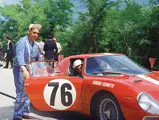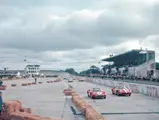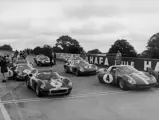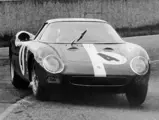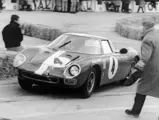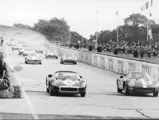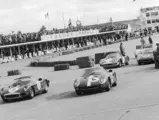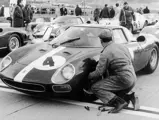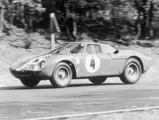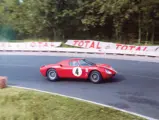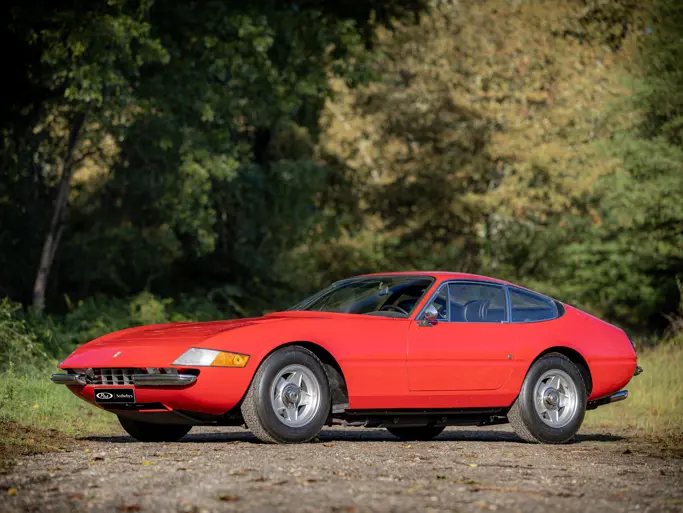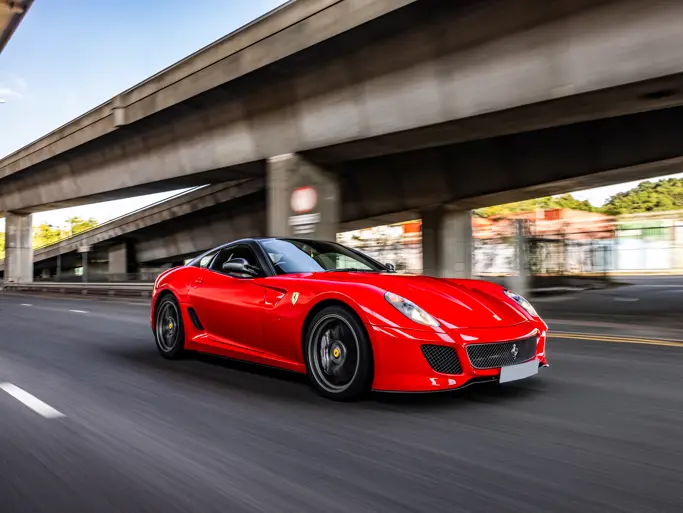Arizona 2015
1964 Ferrari 250 LM by Scaglietti
{{lr.item.text}}
$9,625,000 USD | Sold
 | Phoenix, Arizona
| Phoenix, Arizona
{{internetCurrentBid}}
{{internetTimeLeft}}

- The ninth of thirty-two examples constructed
- Delivered new to Scuderia Filipinetti; raced by Ludovico Scarfiotti and Nino Vaccarella
- Extensive racing history
- Ferrari Classiche certified; matching-numbers engine
- Unbroken ownership history from new, including Paul Schouwenburg, Lord Irvine Laidlaw, Federico Della Noce, and Henri-Louis Maunoir
- Documented by Ferrari historian Marcel Massini
320 hp, 3,286 aluminum-block V-12 engine with six Weber 38 DCN carburetors, five-speed transmission, independent suspension with front and rear unequal length wishbones with coil springs, telescopic shock absorbers, and anti-roll bars, and four-wheel disc brakes. Wheelbase: 94.4 in.
Within the realm of Enzo era Ferraris, variants of the legendary 250-series sports cars remain the most desirable and valuable. These thoroughbred Ferraris boasted an unrivaled record on race tracks throughout Europe and North America and handily swept the podiums of events, ranging from Italian hill climbs to the 12 Hours of Sebring and 24 Hours of Le Mans.
The completely redeveloped, lightweight, rear-mid engined Ferrari 250 Le Mans, named for where Ferrari had enjoyed unprecedented success since 1960, was the company’s 1964 entrant into sports car racing, and it was ready to uphold the company’s winning legacy. Although it didn’t take a 1st place in its introductory year (that particular honor was achieved by another Ferrari, a 275P), the 250 LM achieved outright dominance in 1965 at the Circuit de la Sarthe, where it was driven by Jochen Rindt and Masten Gregory. To this day, it remains Ferrari’s last overall victory in the endurance classic.
THE 9TH OF 32: CAMPAIGNED BY SCUDERIA FILPINETTI
Chassis number 5899 GT was the ninth example of Ferrari’s vaunted 250 LM, and according to Ferrari historian Marcel Massini, it was completed by the factory on June 3, 1964. As was the case with the vast majority of 250 LMs, it was finished in Rossa Cina and fitted with Panno Blu seats. Six weeks later, it was sold by the factory, destined for Switzerland’s most storied racing team, Scuderia Filipinetti.
Filipinetti’s first outing with the car would be at the Sierre-Montana Crans Hill Climb on August 30, 1964. The car was driven by Ludovico Scarfiotti, one of Ferrari’s top Formula One drivers and the winner of the 1963 24 Hours of Le Mans. He obviously felt right at home in the 250 LM, as they finished 1st overall. The car’s second outing occurred the following weekend, at the XV Coppa Inter-Europa at Monza, and it would yield the same winning result. This time, Ferrari’s Nino Vaccarella, yet another Ferrari Formula One driver and the winner of the 1964 24 Hours of Le Mans, would drive 5899 to victory yet again. Unfortunately, in the next event, Vaccarella and Jean Guichet would be forced to retire from the 1000 KM of Paris in Monthlery due to an accident that damaged the radiator. This would be the last outing for chassis 5899 under Scuderia Filipinetti.
CONTINUED SUCCESS WITH ECURIE BASILISK
For the 1965 season, the 250 LM was sold off the stand at that year’s Geneva Motor Show to its second owner, Werner Biedermann, an architect and resident of Zürich, Switzerland. The car was subsequently registered in Zürich on Swiss license plates and was campaigned under the banner of Ecurie Basilisk, of Basel, Switzerland. The car remained hugely successful in the hands of Ecurie Basilisk, garnering no less than 10th overall at an astounding 15 different events.
However, on October 16, Ecurie Basilisk’s luck would run out. With Biedermann behind the wheel, the car flipped onto its roof during a practice run for the SAR Engelberg Hill Climb. Fortunately, Biedermann emerged largely unscathed. Shortly afterwards, Biedermann sold the car to its third owner, Hans Illert, of Feldmeilen, Switzerland, and 5899 began a new chapter in its life.
LM-P: A FERRARI IN PORSCHE CLOTHING
Illert, anxious to embark on repairing 5899, chose to make some modifications that would improve the potency of the Ferrari. Interestingly, partly due to financial limitations, he elected to remove the damaged Scaglietti body and replace it with that of a Porsche 906 Carrera 6, shortening the chassis in the process to conform to the 906 wheelbase. In so doing, the Porsche body itself was also altered to resemble the LM, but it was easily given away by the 906 “gullwing” doors. Ultimately, this transformation shaved 200 kilograms off of the standard 250 LM, and Illert renamed the car “LM-P.”
The car was campaigned by Scuderia Tartaruga and driven by Illert at the 23rd annual St. Ursanne-Les Rangiers Hill Climb in Switzerland on August 20 and 21, 1966, and the modifications proved to be persuasive, as the car finished 1st. The 250 LM-P would go on to be quite successful in its new guise, and Illert campaigned the car to numerous podium finishes throughout the remainder of the 1966 season.
Nineteen sixty-seven would prove just as fruitful for this car. After being displayed at a show in Zürich in January of that year, it returned to the race track that May, starting with the Slalom Wangen at the Dübendorf Airfield, where it placed 1st in class. As it did in past years, chassis 5899 continued to race throughout the summer of 1967, still reaping in an impressive number of trophies, with Hans Illert, Dieter Spörry, and Heini Walter all taking turns behind the wheel.
Following the 1967 racing season, Illert sold the car in early 1968 to Pierre Sudan, of Zug, Switzerland. Looking to further increase the performance of the 250 LM-P, Sudan removed the car’s original 3.3-liter engine and replaced it with the 4.0-liter unit from a 330 P (stamped number 0818), which was sourced through David Piper. Sudan retained Illert’s nomenclature, renaming the car 330 LM-P to properly identify its new powertrain. Of course, with this new engine, the car would not sit idle. Sudan returned to hill climbing circuits to campaign the car during the summer and fall of 1968 throughout Europe, racing in both Belgium and Austria. Towards the end of the season, Sudan placed the car for sale in the German Magazine Auto, Motor und Sport.
Sudan parted was with chassis 5899 in April 1969, selling it to Autoreparatur Handelsverwertungs GmbH in Austria. Once again, this car would return to competition, being campaigned in Austria by Stefan Sklenar. After contending in hill climbs in Germany and Austria, Sklenar raced the car at the 200 Miles of Nürnberg and the Tyrolean Grand Prix in the summer of 1969, placing 13th and 10th overall, respectively.
Unfortunately, following an accident in early 1970, the Porsche-based body was largely destroyed, and chassis 5899 passed through a series of owners, including Paul Blancpain and Bob de la Rive Box, all of whom had intended to return the car to its former glory. The car wasn’t prepared for its first restoration until it was sold to noted Ferrari enthusiast Paul Schouwenburg. To begin, Schouwenburg acquired the car’s original 3.3-liter engine through David Piper, trading the 4.0-liter V-12 back to Piper in the process.
REVIVAL OF CHASSIS NUMBER 5899 GT
After sourcing its original engine, Schouwenberg sold the car to Eric Stewart, of the British pop band 10CC. It was Stewart who finally committed to bringing the car back to life in its original configuration. In 1977, he commissioned a restoration by Victor Norman and Bob Houghton’s Rosso Limited in Cirencester, England. To refit a proper 250 LM body, the original chassis was sent to Ferrari’s Assistenza Clienti in Modena and subsequently William Vaccari for restoration. The renewal was completed in May 1981 and Stewart got behind the wheel for the first time for a test drive at Goodwood shortly thereafter.
Following its departure from Stewart’s ownership, the newly restored 250 LM was sold briefly to Germany, after which it was shipped to its next keeper, a resident of La Jolla in the United States, and it would remain in California with a handful of collectors throughout the early 1980s. Travelling further west, the 250 LM was sent to Japan, where it resided until 1992, before returning to Europe and finding new ownership in England.
Lord Irvine Laidlaw, noted collector of pedigreed racing machinery, purchased the Ferrari in July 1995 and soon had it fully overhauled and serviced by Phil Stainton. The car was sold two years later to Federico Della Noce and Andrè Lara Resende, who would commission yet another restoration to meet the rising standards of the day. Chassis 5899 was sent to Dino Cognolato’s Carrozzeria Nova Rinascente in Vigonza, Italy, and mechanical work was performed by Corrado Patella. Cognolato rectified the front body work of the car to correct the radiator housing, and it was then sent to Carrozzeria Autosport di Bacchelli e Villa in Bastiglia for final preparation and a fresh refinishing in the original Rosso Cina.
RETURN TO THE RACE TRACK
After the completion of the restoration, the 250 LM joined the historic racing circuit with the Shell Historic Ferrari Maserati Challenge in October 2000. Throughout the next five years, both Della Noce and Resende campaigned their Ferrari at a variety of venues around the world, including Laguna Seca, Monza, and Brands Hatch. On April 13, 2005, chassis 5899 GT was granted Classiche certification by the factory, with its vaunted Red Book confirming the quality and authenticity of its restoration and repairs. Soon thereafter, it was proudly on display at the factory’s Galleria Ferrari in Maranello.
In 2006, Della Noce and Resende sold this car to Henri-Louis Maunoir, of Switzerland, an enthusiastic collector and racer. Now back in Switzerland, it is interesting to note that Maunoir is married to Georges Filipinetti’s granddaughter, Samantha, bringing it around full circle. During Maunoir’s ownership, the Ferrari was shown at Ferrari’s 60th anniversary festivities at Fiorano in 2007. It was displayed proudly at select events thereafter, including the 60th anniversary of Garage and Ecurie Francorchamps in Spa-Francorchamps, Belgium, in May 2012.
Chassis 5899 GT presently wears its original Scuderia Filipinetti livery and resides in the United States, within a collection of other equally rare and historically important Ferraris. As such, it has been very well maintained and preserved in its current configuration. Like most 250 LMs, this car was raced hard when new, just as its manufacturer had intended. Since garnering great success on the race track with Scuderia Filipinetti, who put some of the world’s best drivers behind the wheel, it has certainly lived up to the reputation of the Cavallino Rampante. Although, as with many racing cars, it lost its original coachwork as a casualty of competition, 5899 did not elude its place on the pedestal of circuit races and hill climbs throughout Europe, proving the capability of the 250 LM chassis and drivetrain, which have their own fascinating and well-documented history.
This Ferrari would be a surefire entrant into historic racing events around the globe, and with its pristine cosmetic beauty and matching correct mechanicals, it would surely draw the right kind of attention on the concours lawn or perform admirably once again when prepped for the track. It comes with a meticulously detailed Massini report that documents ownership from new, an original owner’s manual with a leather pouch, and a proper tool roll.
The opportunity to acquire an historic 250 LM, the model that was the last Ferrari to win the 24 Hours of Le Mans overall, is an uncommon occurrence, especially one that has known ownership, an impressive competition record, an original chassis and engine, and is certified by Ferrari Classiche.

